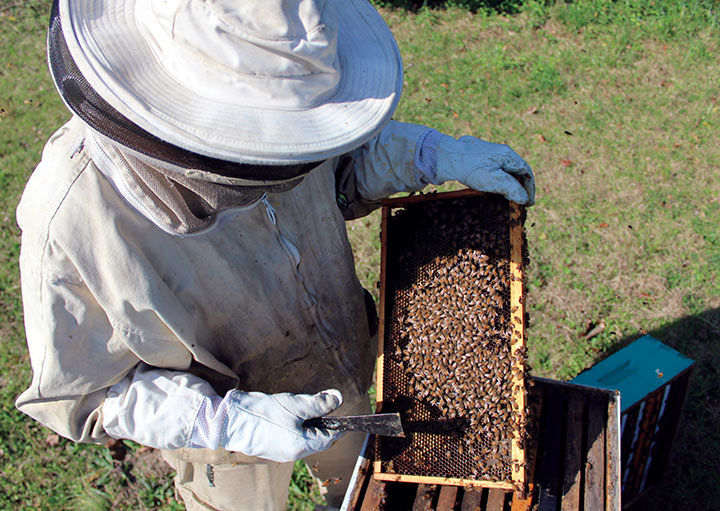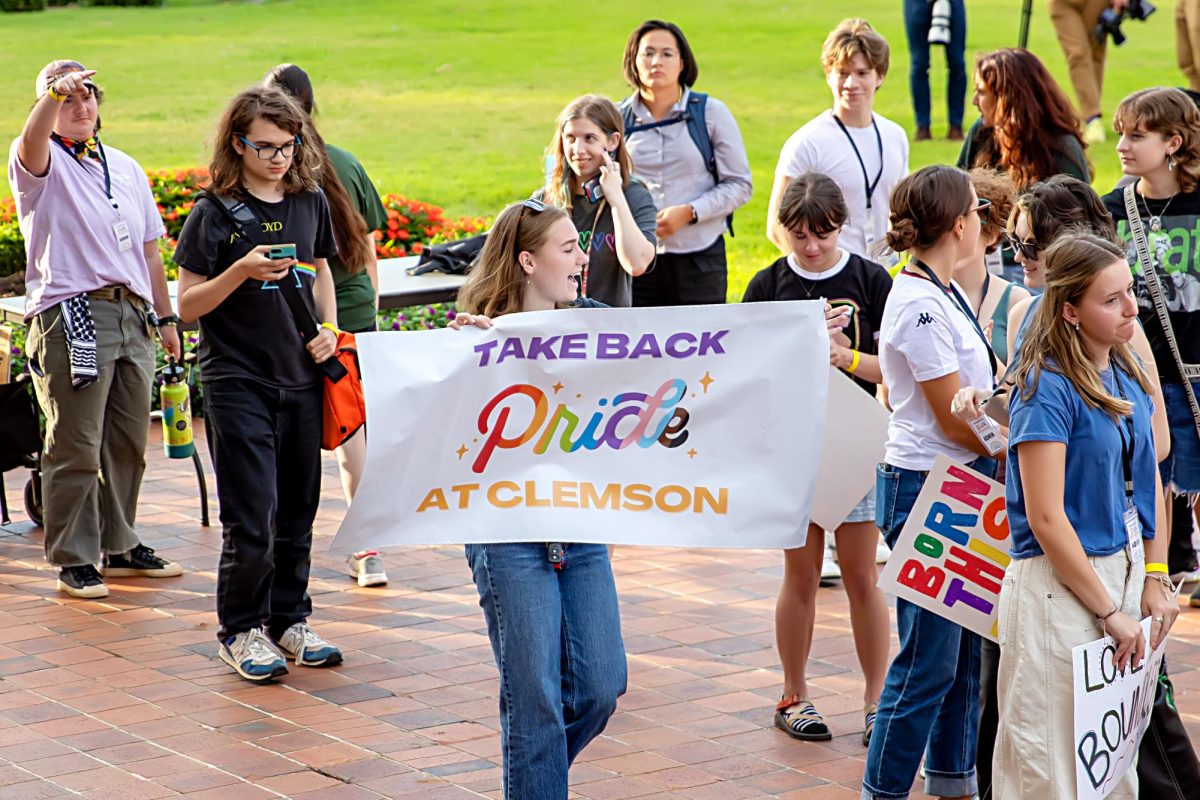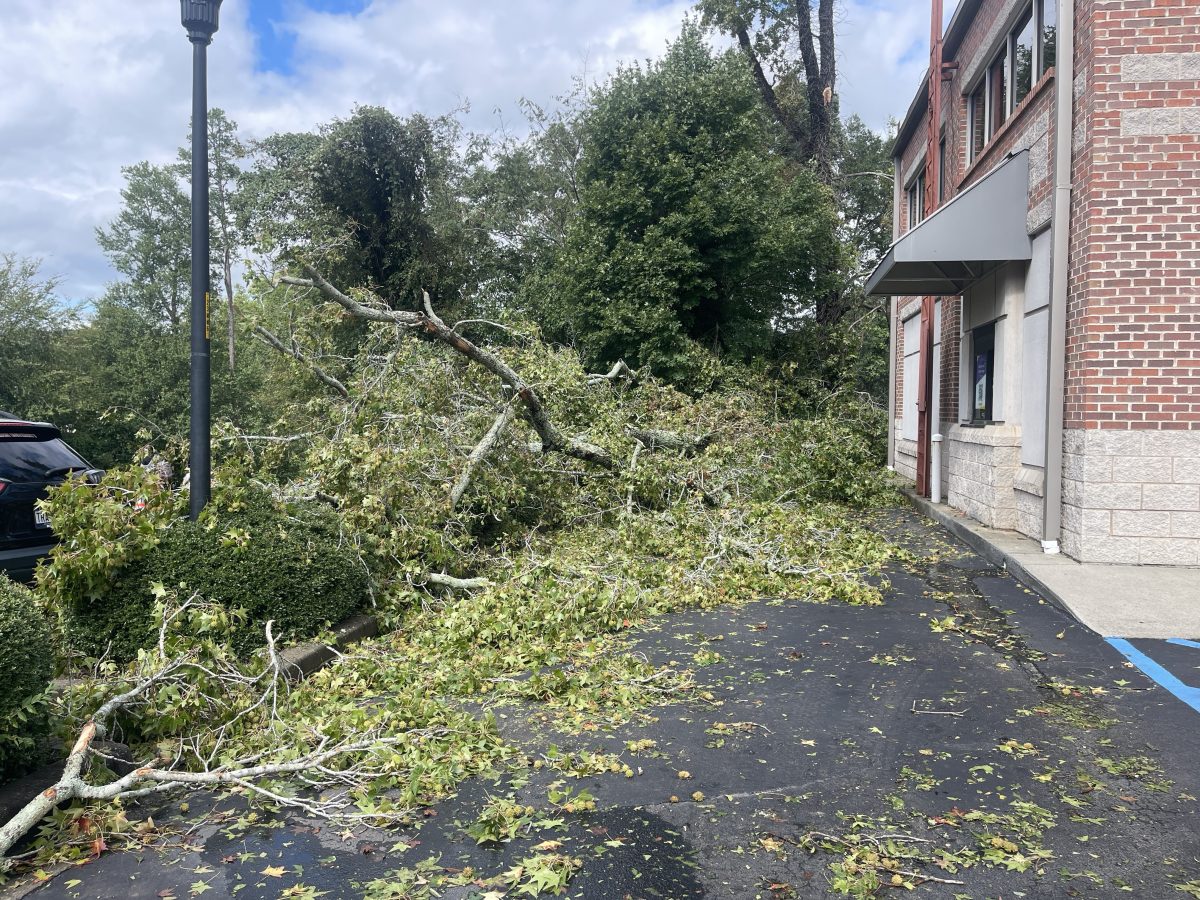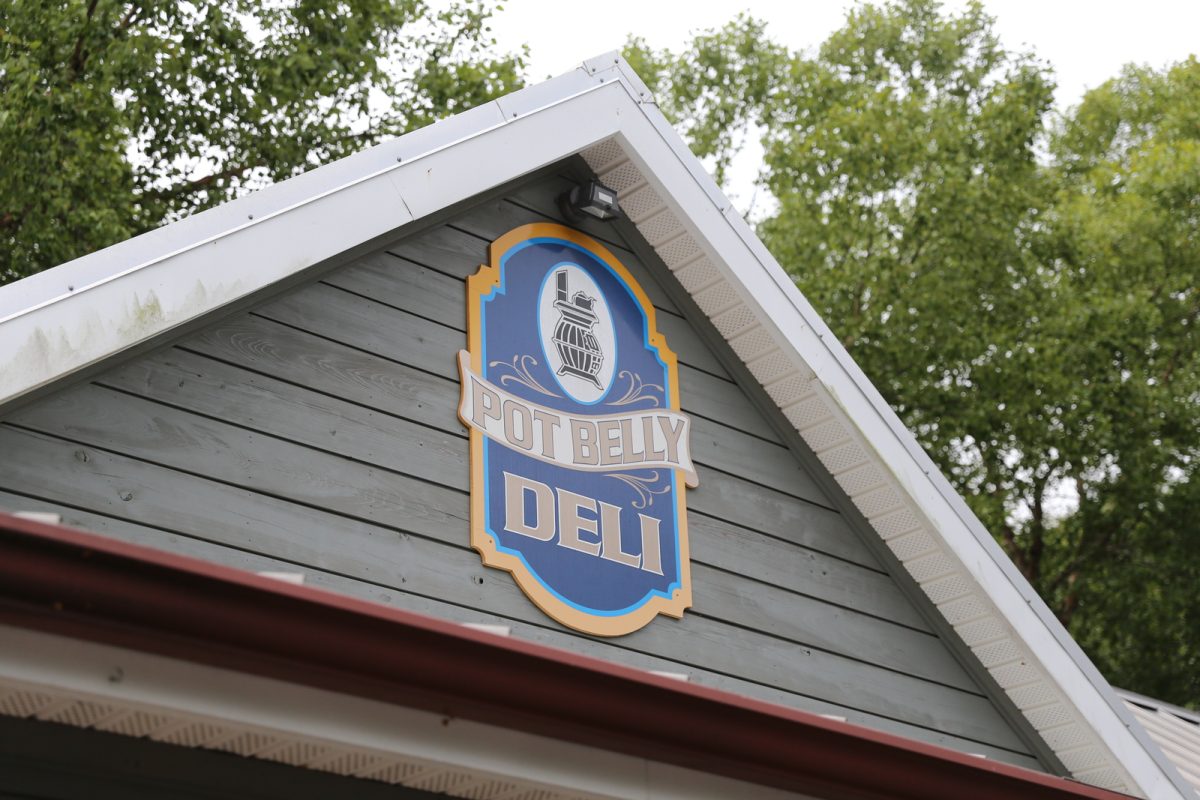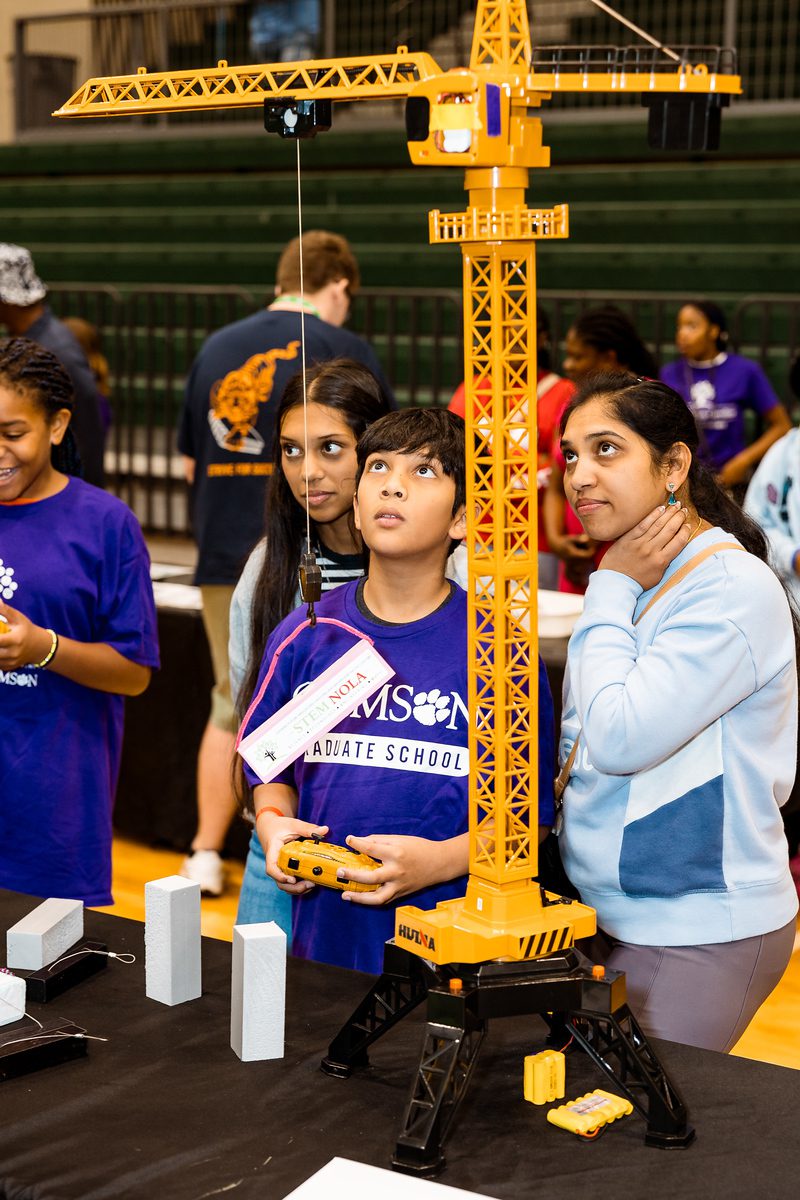Most people would flee from a dark cloud of honeybees buzzing around them. Scott Derrick relishes the frenetic buzz – at least when he’s dressed in a full-body protective suit.
The 39-year-old Blythewood man is a beekeeper and a businessman. Derrick spent 18 years creating flavors for Lance foods and fragrances for Yankee Candle and Bath & Body Works before trading his corporate job for more time at home with his family and a new hobby of beekeeping.
“My grandfathers kept honeybees when I was younger, and it always intrigued me. But I never got to do much with them because I was so young. And that memory always sat in the back of my mind. So I just started one day,” Derrick said.
In 2004, Derrick started a honeybee removal service called Blythewood Bee Co. Since then, he’s climbed into attics, up trees and into other uncomfortable spaces to remove buzzing hives plaguing residents.
Around this time, Derrick also translated his olfactory abilities into products for beekeepers.
After three years of trial-and-error experiments, he had a eureka moment. Using a honeybee pheromone called nasonov, Derrick created a spray called Swarm Commander to attract honeybees to a designated area. It is now sold across the United States and internationally in Australia, New Zealand and Sweden.
Derrick also began selling protective suits, smokers, hive frames and his pheromone liquids through an online store. But as orders piled up, so did the complaints from his family that the house smelled like Swarm Commander.
He had to expand.
Derrick opened a successful brick-and-mortar shop in Blythewood a month ago, making it the third beekeeping supply store to open in the Midlands. It has become the meeting place for the Blythewood Beekeepers Association, a group he started two years ago for the area’s beekeepers.
Danny Cannon, owner of Bee Trail Farm, said the new store has made bee season “less stressful” because he can get supplies faster if he forgets something.
Tom Dukes, a Lexington resident and novice beekeeper, said the shop offers a better alternative to mail-order products because “you need products fast when you need to attract a swarm or need to get rid of bees in the attic.”
Derrick loves that he is able to help his clients. But it is his love for the honeybee that drives his work.
“Honeybees are so important to the human race. Our diets would be so different without them because they pollinate our fruits and vegetables,” he said.
Saving the honeybee
About three-fourths of the world’s food crops depend on pollination, according to a report released by the United Nations Intergovernmental Science-Policy Platform on Biodiversity and Ecosystem Services. And more than 40 percent of invertebrate pollinators – bees and butterflies – are “facing extinction.”
Honeybees are not native to the Americas and were first brought to North America by English settlers in 1622. Although not native to the American landscape, wild colonies of bees spread quickly as white settlers moved out across the continent.
Since the 1940s, the number of managed honeybee colonies in the United States has declined from 5 million to 2.5 million because of various threats – invasive species, diseases, pesticides and habitat destruction, according to the U.S. Department of Agriculture.
“Varroa mites are the biggest threat for honeybees,” said Dr. Keith Delaplane, director of the University of Georgia’s Honey Bee Program. “And we have environmental degradation occurring. Not just through coal mining, but also through urbanization and crop sterilization. We just seem to be reaching a tipping point.”
The declining health of honeybee colonies was heightened by the arrival of new diseases and pests in the 1980s, according to the USDA. And in the 1990s, the Varroa mite, which was introduced from eastern Asia, created more concern as it began to kill colonies.
In 2006, a more mysterious and alarming threat appeared as beekeepers across the United States reported colony losses of 30 to 90 percent. It was due to colony collapse disorder (CCD), a disease defined as a colony that has randomly died except for the queen and immature bees. Researchers have not yet found a cause.
South Carolina’s managed honeybee colonies have a history of devastation and reform.
In 2011, an average colony loss of 22.9 percent was reported, according to the Bee Informed Partnership’s National Management Survey, which is part of a USDA-sponsored research program. In 2012, an average colony loss of 41.4 percent was reported, making South Carolina 13th out of 5o states with the worst colony loss. And in 2013, the last year data was made available, an average colony loss of 29.5 percent was reported.
Pesticide use, Varroa mites and colony collapse disorder are major threats to South Carolina’s honeybee colonies, said Tom Ballou, president of the Mid-State Beekeepers Association.
He added that pesticide use is the “biggest problem in South Carolina” and that it’s “causing honeybees to starve.”
Derrick blames large corporations such as Bayer and Monsanto for their use of neonicotinoids, an insecticide used to control various pests, a charge the corporations deny.
“Seeds are coded with these products and they’re destroying our honeybees. Until the government stops being reactionary, change will be tough,” Derrick said. “We need to ban neonicotinoids like Europe did.”
In 2013, the European Union banned the use of three types of neonicotinoids after several studies linked the insecticide to honeybee colony collapse.
Today, two-thirds of the world’s crops are exposed to neonicotinoids, including 90 percent of corn and 60 percent of soybean acres.
Bayer CropScience produces some of the most widely used neonicotinoids in the world and considers them safe. Monsanto, the world’s largest seed producer, uses Bayer’s neonicotinoids on some of its seeds. Monsanto is known for its herbicide Roundup and its genetically modified seeds that are resistant to it.
David Fischer, director of pollinator safety at Bayer CropScience, responded to criticism in a 2012 Forbes article addressing the use of neonicotinoids.
In his response, published on his blog and Bayer’s website, Fischer said: “The idea that it all started in 2006 and coincided with the introduction of neonicotinoid insecticides is a myth … there is no credible scientific evidence demonstrating a link between the use of neonicotinoid insecticides and the occurrence of widespread honey bee colony losses, including CCD.”
A study conducted by the Environmental Protection Agency (EPA) earlier this year found that neonicotinoids didn’t harm honeybees or their hives when used on corn, berries and tobacco but did cause harm when used on cotton plants and citrus trees.
Gus Lorenz, associate head of entomology at the University of Arkansas, said he and other researchers were disappointed by the EPA study and worried that “science has gone out the door.”
He said his research conducted in the mid-South shows that “neonicotinoids pose no threat to honeybees” because there is “very little” pesticide present when plants begin to bloom.
Jay Evans, research leader for the USDA’s Bee Research Lab, said “diseases have had a bigger impact on honeybees just because there are so many (diseases) in different parts of the country. It doesn’t mean that the pesticides don’t have an impact … I believe honeybees are sensitive to them (neonicotinoids) for sure. Now, I think the key work has to do with exposure rates and ingestion and whether or not they have relevant levels of insecticides.”
Some researchers need more data.
Janet Knodel, extension entomologist at North Dakota State University, said neonicotinoids applied during bloom could be “deadly to honeybees” but that she is “on-the-fence” until she sees more data. She said “withdrawing insecticides right away without an alternative is not the right solution” because it leaves growers without protection against pests.
There is one threat that South Carolina beekeepers didn’t see coming– regulation.
West Columbia considered an ordinance last year that would require the city’s beekeepers to hold a permit. It also sought to implement lot size regulations – 7,500 square feet for one hive and 5,000 square feet for an additional hive. The ordinance was abandoned after the Mid-State Beekeepers Association formed a grassroots response to educate the city’s planning committee.
Solutions have been organized on a statewide and national scale to solve the honeybee conundrum.
President Obama established the first-ever federal pollinator strategy last June. Because of this, the Agricultural Department announced $8 million in incentives to farmers in five states who designate parts of their land for honeybees. The Agricultural Department also provided $3 million to reseed Midwest pastures with alfalfa and clover, providing food for honeybees.
In South Carolina, Clemson University and the South Carolina Agriculture Department established an online program in 2014 that allows the state’s beekeepers and farmers to compare notes on the locations of hives and areas designated for pesticide to avoid poisoning.
The South Carolina Beekeepers Association holds yearly conferences that includes input from researchers such as Dr. Juliana Rangel of Texas A&M’s Honey Bee Lab and Jerry Hayes of Monsanto’s Beelogics. Also, many of the state’s local associations hold beekeeping courses.
Educating the people
South Carolina businesses are addressing the honeybee issue through education.
Derrick recently started teaching beginner courses to residents interested in beekeeping. His first class, held on March 19, included a history of the honeybee, information about the threats and solutions, and beekeeping basics.
“Honeybees are social insects and beekeepers are social people. So they’re kind of a perfect match,” Derrick said. “And the number of interested residents who have come through the doors has been astounding. So I think businesses like mine can help bring back the honeybee.”
Interested residents who attended the class feel more confident about starting their own hives.
“I went to get more information so that I could have a better than average chance at sustainable success,” said Hugh Staples, owner of a Columbia landscaping business. “I feel better equipped than I did before because of his willingness to stop and answer my questions, which a lot of people don’t do because of a tight schedule. But he did.”
South Carolina businesses have been holding courses since the 1990s.
Bee Well Honey Farm and Supply in Pickens has been holding instructional classes for interested residents and veteran beekeepers since it was founded in 1999.
Kerry Owens, owner of Bee Well Honey Farm and Supply, said courses are “great for promoting the honeybees” and that they have the potential to become a family hobby.
Other companies, including The Carolina Honey Bee Co. in Travelers Rest and Bee Trail Farm in Lexington, also hold courses.
There are several benefits that beekeeping can provide to humans and the environment, according to Utah State University’s backyard beekeeping guide.
Beekeepers can collect up to $200 worth of honey from each hive they maintain. And those who eat the honey are provided health benefits such as anti-inflammatory, antiviral and antioxidant effects. Also, keeping bees is good for the environment because it aids in the pollination of nearby fruits, vegetables and plants.
Despite being an enthusiast, Derrick teaches his students to have less interaction with their honeybees – a more natural approach to beekeeping.
“They need to adapt to the threats. If we continue to treat them with chemicals and give them a crutch, they won’t adapt. We’re enabling them to die,” Derrick said. “Some bee colonies will clean the mites off of each other. Why do they do it? Because we got out of the way.”
One beehive at a time
As flowers bloom across the Palmetto state and bees begin to buzz, Derrick is preparing to hold more classes and handle more shipments of supplies as he also worries about the store.
The company has already outgrown the 1,800 square foot store with its expanding inventory, which includes honey, smokers, pheromone sprays, hive frames, hives, protective clothing, pest control and live honeybee queens.
He’s already making his five-year plan.
“I want a 5,000 square foot building added behind the shop where we can make our own woodenwares. And I want to purchase the property behind the shop to raise about 20 hives so that I can provide more bees to residents and get more honey,” Derrick said.
Customers can also expect to see new products on the shelves in the near future as Derrick is currently experimenting. He’s “sworn to secrecy” about the products.
Derrick may also expand his focus to other bee species such as the Mason bee, a species that spends most of its time alone in its mud compacted nest.
“I know honeybees will survive because they’ve suffered through more than man,” he said. “And more people are starting to understand why they should be helping them.”
Categories:
Saving the honey bee: A guest column from the University of South Carolina
Andrew Moore, Guest Columnist
March 28, 2016
Photo contributed by Andrew Moore
Beekeepers fight to save bees by raising colonies and educating the public.
0
Donate to The Tiger
Your donation will support the student journalists of Clemson University. Your contribution will allow us to purchase equipment and cover our annual website hosting costs.
More to Discover

